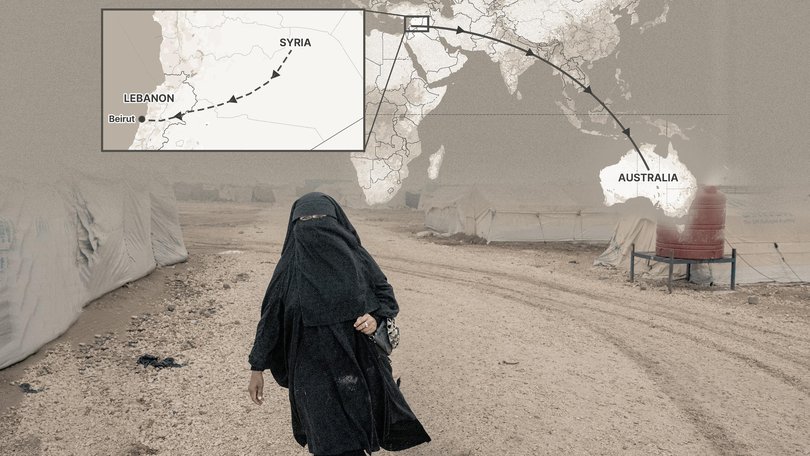ISIS brides: More Australian women who went to Syria in support of Islamic State now expected to return

Two ISIS brides who quietly returned to Australia in September have paved the way for others to follow in their footsteps, and did so with “a lot of help” from the Government an expert believes.
Last month it was revealed a group of six Australians, two women and four children, quietly returned to Australia from Syria in late September.
Despite allegations of a cover-up, the Australian Government said it did not repatriate or help the group return to Australia, insisting they made their own personal travel arrangements.
Sign up to The Nightly's newsletters.
Get the first look at the digital newspaper, curated daily stories and breaking headlines delivered to your inbox.
By continuing you agree to our Terms and Privacy Policy.But Greg Barton, a Professor of Global Islamic Politics at Deakin University, said while the Government did not extract the Australians itself, it would have provided “a lot of help”.
“I think that there would have been quiet negotiations,” he said.
“This planning and negotiation would have gone on for many months.
“I’m sure there would have been a lot of co-ordination.”
The two women – believed to be sisters – fled the notorious Al-Hawl detention camp in north-east Syria with their four children in early June.
The group of six quickly made it to Lebanon, more than 500km away, where they were reportedly detained trying to cross the border before arriving at the Australian Embassy in Beirut on June 6.
They underwent identity and security screenings before being issued Australian passports.
Home Affairs has revealed that two of the four children were born in Syria and had to apply for Australian citizenship by descent.
The group then flew on a commercial flight from Beirut to Melbourne on September 26.
Not a secret
“It was done with the full light of day, with the Australian Government and with the Victorian Government too, I might add,” a source told the Nightly.
“They’ve made that journey for the sake of the children, primarily, to get them to safety.
“Apparently the change of the Syrian government is what created an opportunity for these women to flee the detention camp because some of the checkpoints fell away.”
Prof Barton predicted the cohort who returned last month had lit the path for others desperate to come home.
“Now it’s possible to formally work with the Syrian government to bring people out of the camps,” he said.
“Moving across that length of Syria, which you couldn’t imagine during the Assad period, now seems like a fairly straightforward thing.
“You pick (Australians) up with the government coordination, do the checks in the camp, and then with some medical personnel and people who are sensibly experienced … drive into Lebanon.”
He believes a series of assessments would have begun before the women and children who recently returned to Australia left the detention camp, before they underwent assessment in Lebanon.
“By the time they are allowed to get on a plane going back to Australia, the authorities are really comfortable,” he said.
The Nightly understands the two women and their children had been detained in the Al-Hawl detention camp since the collapse of the Islamic State in 2019.
The majority of Australian women and children were subsequently moved to Roj camp.
A source told The Nightly that “getting out of Al-Hawl has never been a problem”.
“Once you’re out of the camp, paying someone to get you across the country is not as difficult as you would imagine,” they said.
“The recent change of the Syrian government meant that the previous checkpoints and borders and everything fell away. That’s what changed the events on the ground.
“That’s the opportunity that was presented.”
Prof Barton agreed that extracting Australians from detention camps in Syria would have become even easier since the Assad regime collapsed in December.
“I don’t think it would be a case now where you would need to use people smugglers,” he said.
“You would simply, discreetly, make arrangements with the government officials.”
Security risk?
The terrorism expert, now based in Indonesia, said most of the Australian women stuck in Syria would pose a low security risk, otherwise “the whole thing wouldn’t have been initiated”.
“ASIO has been very clear that, on balance, the risks of leaving women and children there is higher, from an Australian security point of view, than is the risk of bringing them back here,” he said.
Now back in Australia, the women would be under “a level of surveillance”.
“But it’s not like there’s a van sitting down the street,” Prof Barton said.
“It would be a case of monitoring their online activity, social media activity, their movements and having somebody with them for their protection as well.”
It remains unknown if the two ‘ISIS Brides’ willingly travelled to Syria to join the Islamic State and if they will be charged with any terrorism offences.
The Department of Home Affairs, the Australian Federal Police and Victoria Police all refused to answer questions.
About 37 Australian women and children remain in the Roj detention camp. It is unknown if any Australians remain in Al-Hawl.
Save the Children Australia said the organisation was not involved in this group’s return to Australia or provided any assistance.
“While we welcome the safe return of the four Australian children and their mothers who came back from al-Hawl camp, we remain deeply concerned for the innocent Australian children still stranded in Roj camp after more than six years,” chief executive Mat Tinkler said.
The AFP have confirmed that more ISIS brides are expected to return to Australia, but would not reveal when or how many.
Retired human rights lawyer Robert Van Aalst, who is assisting the recently returned group, did not return calls.

